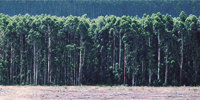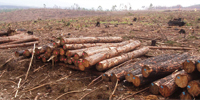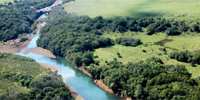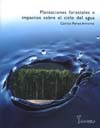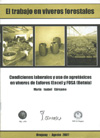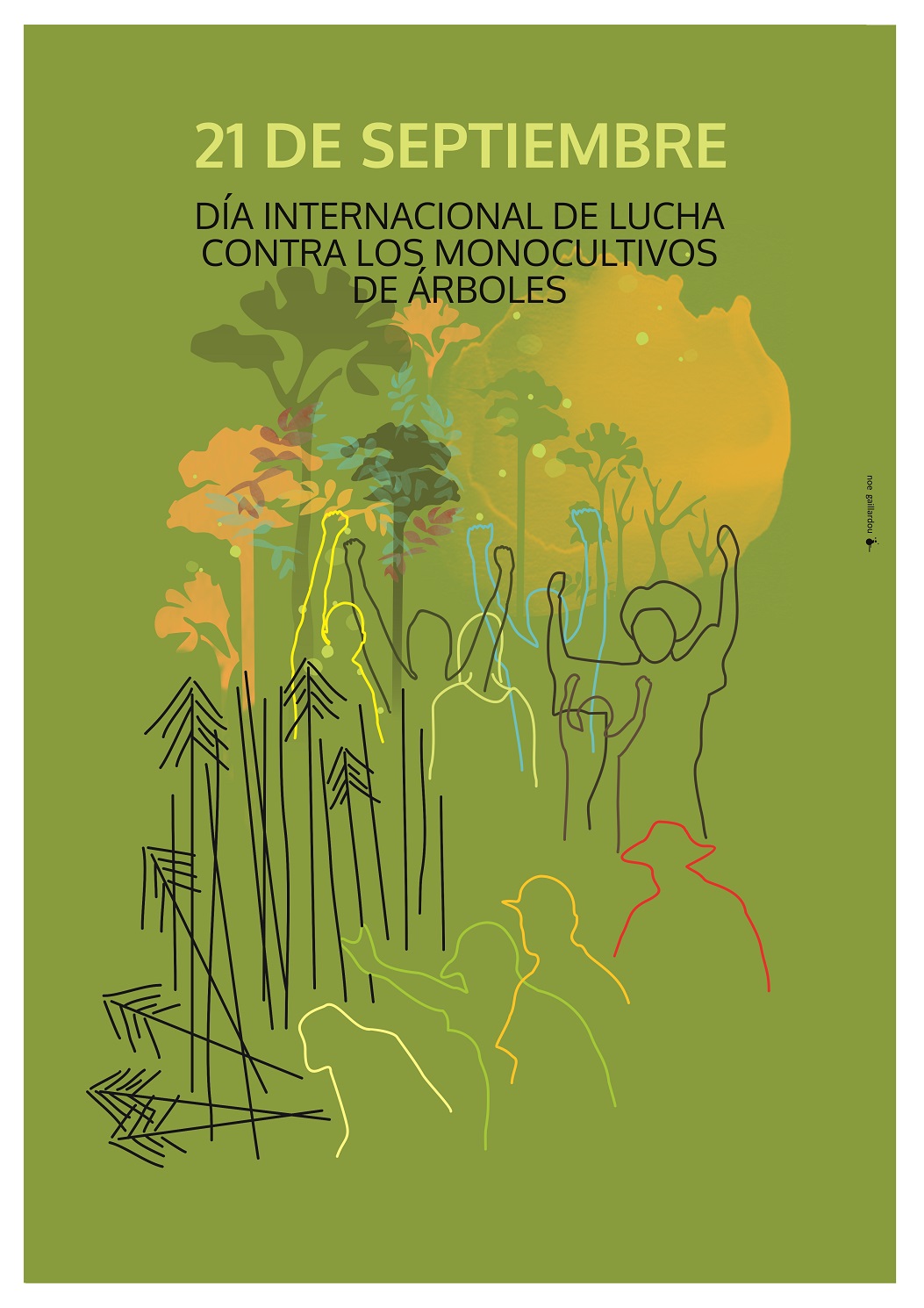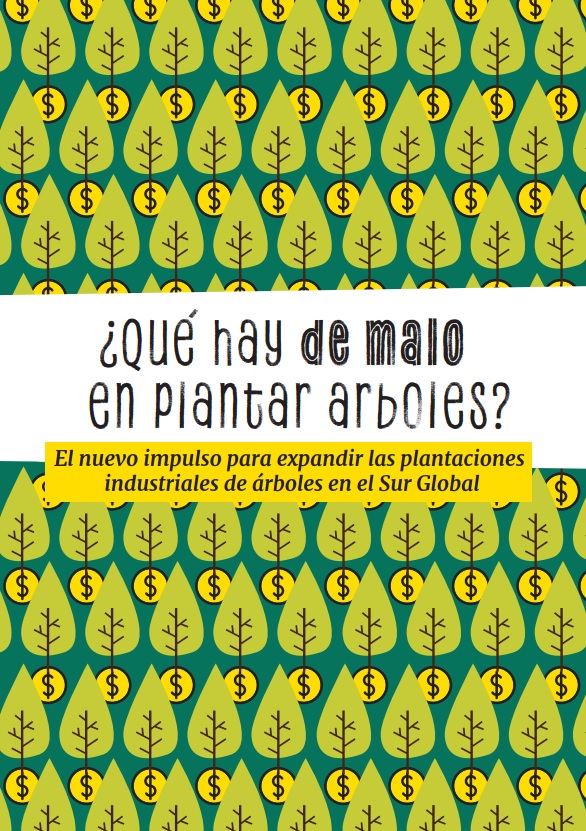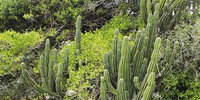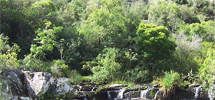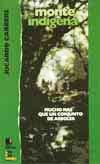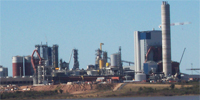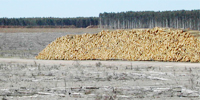The traditional January summer siesta in Uruguay has been interrupted, not only by constant rainfall but also because there has been no respite in the advance of the pulp mills. They continue with their advertising campaign, based on falsehoods, which are then repeated as truths. Promises and mirages made to a population with a high rate of unemployment, desperately in need of solutions.
In fact, this is nothing new. Trans-national companies are taking over the world (understood as globalization), using the creed that no development is possible without foreign investment. However, the countries of the South receiving foreign investment remain as poor as before or become even poorer: these countries are the scenarios where exclusion, exploitation and extermination grow. Or is wealth measured by the number of cell-phones?
Uruguay has become the focus of the forestry-pulp mill business. Its grasslands have turned into monoculture tree plantations and their effects have already made themselves felt: they concentrate land in foreign hands, deplete water sources, open up the way to pests, contribute to rural migration and provide fewer jobs than the other rural activities they have displaced. And now that the trees are ready to harvest, the intention is to install a mega pulp mill industry to use this attractive raw material. The Finnish company Botnia and the Spanish company Ence have already obtained building permits. Botnia has started works in the midst of major regional opposition reaching bi-national dimensions. Stora Enso has just landed in Uruguay with the purchase of 50,000 hectares for plantation and intends to acquire 100,000 hectares more by 2007 with the objective of feeding a gigantic pulp mill in the centre of the country (see articles on the issue on WRM’s web page, under section by country: “Uruguay”)
This implies destruction, ranging from the Uruguayan landscape itself to its odours, starting by the quality of life of its people and ending by its productive and sovereign future. They will be unable to accomplish this if the facts are known, so a different scenario has to be shown and the truth has to be hidden.
* Botnia and Ence have announced that they will use the “best” available technology at world level – a technology using chlorine dioxide or the ECF system.
FALSE: A few modern pulp mills are currently considered leaders from an environmental point of view. These include the Mönsterås and Östrand mills in Sweden, and the Stendal mill in Germany. They all are able to produce 100% high quality Totally Chlorine Free (TCF) bleached pulp, involving the opportunity to implement a Closed Circle (CC) option, which reduces fresh water usage and offers opportunities to nearly eliminate bleach plant wastewater discharge. (1)
* They say that the factory will have no negative impacts on the environment, or on the water, or the air, or the land. “Here we will not be generating any cancer-giving substance. Nor will we be generating dioxins and furans, persistent organic substances that are generated undesirably.” “Not one gram of dioxin will be generated here.”
FALSE: “The bleaching stage is perhaps the most problematic one in environmental terms in a kraft pulp bleaching factory. Large quantities of chemical substances are produced and used and it is usually the only part of the factory that generates a permanent flow of effluents.” “In relation to the ECF technology, it should be noted that all bleaching chemicals are potent oxidisers, and as a result they present hazards to workers and nearby residents.” “(…) Both chronic and acute toxic effects can result from ClO2 exposure including irritation of the eyes, nose, and throat, coughing, wheezing and breathing difficulties (possibly delayed), pulmonary edema, possible chronic bronchitis and asthma. This, along with the chloroform and similar by-products from ECF
bleaching, contribute to the hazard profile of chlorine dioxide.” (1)
* They say that if you visit the 300 mills in Europe, these factories live in harmony with cities and have no problems in doing so. The rivers still have fish and the people still swim in them.
FALSE: In the summer of 2003, some 7,500 cubic metres of black liquor leaked out of the UPM pulp mill in Lappeenranta, Finland and seriously contaminated an important area of Lake Saimaa. According to the local press, “the biological treatment plant was unable to deal with this sudden discharge and in a matter of days the black liquor spread out into the waters of the lake.” The press continued by saying “the black liquor consumes the oxygen from the water, causing a high rate of fish mortality and also darkens the waters and contaminates the shores. Furthermore, it has an extremely disagreeable smell. Half the fish stocks were eradicated over a radius of three kilometres from the mill.” The accident caused great anger as it happened just when the summer holidays were starting (in Finland summer is very short) and the people were getting ready to enjoy the lake. To make matters worse, the company did not inform anybody about the problem. “It was just like old times. The water was heavy, white and full of froth. The smell was terrible. It spoilt the holidays as the problem lasted a whole month.” (2)
* they say that the smell given out by the pulp mills is not disagreeable, it is a smell that changes, but it is not strong.
FALSE: at the beginning of the nineties, the Finnish South Karelia Institute on Allergy and the Environment carried out a series of studies on the impacts of malodorous sulphurous compounds on human health. These compounds are basically hydrogen sulphide (H2S), methyl mercaptan (CH3SH) and methyl sulphurs [(CH3)2S and (CH3)2S2]. These are released by pulp mills using a process with sulphate (the same one that is to be used in Uruguay). From the various studies carried out it is clear that these odours are not only simply noxious and unpleasant, but they also have impacts on health, in particular increasing the risk of acute respiratory infections, problems with the eyes, headaches and neuropsychological problems among others. Furthermore, the studies have observed that these compounds enter the local inhabitants dwelling and therefore people are exposed to them in their own homes. When asked about their experience regarding diseases associated with pulp mills, people immediately talk of asthma, allergies and skin problems (2)
The plans to install two gigantic pulp mills on the Uruguayan side of the Uruguay River are facing increasing mobilization by Argentine neighbours from the Province of Entre Rios, who see their economic activities based on riparian tourism threatened.
In Uruguay, various organizations and people too are opposed to an undertaking that will not only be hazardous as regards contamination, but will involve condemning the country to the condition of supplier of a contaminating raw material, that will take over our land through forestation, jeopardising our water, flora and fauna and that does not provide genuine jobs. What will be the situation 40 years from now when the pulp mills come to the end of their useful life, leaving enormous cement corpses and the plantations leave our rural areas devastated?
There are many people who do not believe in the falsehoods advertised by the companies, and others who are beginning to doubt them. The warning must come now because when the pulp mills are installed, it will be too late.
By Raquel Nuñez, World Rainforest Movement, e-mail: raquelnu@wrm.org.uy
1. Data from the Report on Observations and Recommendations by the WWW International Assessment Mission regarding the Carlos Andwandter Nature Sanctuary and Ramsar Site and Valdivia CELCO pulp mill controversy, Valdivia, Chile, November 2005.
2. “Following the track of pulp in Finland. The other side of the coin,” June 2005, field research carried out by Ricardo Carrere http://www.guayubira.org.uy/celulosa/Finlandia.html

